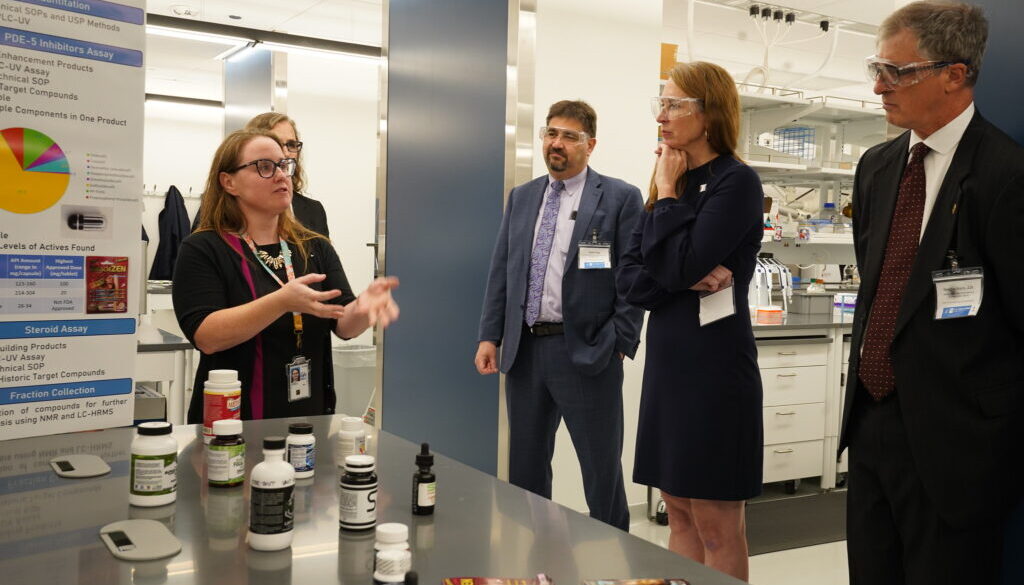The FDA needs to go beyond synthetic dyes to make food safer
Listen to the audio version of this article (generated by AI).
 By R. Thomas Zoeller
By R. Thomas Zoeller
The US Department of Health and Human Services (HHS) and the US Food and Drug Administration (FDA) recently targeted synthetic dyes in food, calling on food companies to eliminate their use. But dyes are not the only harmful petroleum-based chemicals in our food.
Plastics used for food packaging are full of petroleum-based chemicals added to make plastic the right color, to be stretchy or stiff, to be clear or opaque, or whatever else is needed. There are about 1,800 chemicals — nearly all derived from petroleum — that leach into food from packaging and other materials that store or process food.
Phasing out petroleum-based food dyes is only the very tip of the iceberg when it comes to protecting people from petroleum-based chemicals in our food. If the Trump administration is genuinely interested in “making America healthy again,” there should be more interest in human health, and less interest in the companies that are making us “sicker, fatter and poorer”.
Petrochemicals in our food
Many of the chemicals that leach into our food are endocrine disrupting, meaning they interfere in some way with our hormone systems. Common examples are bisphenols, like BPA, found in food can linings and various packaging materials; phthalates, which are used to make plastics soft or stretchy; and per-and polyfluoroalkyl substances (PFAS), used to coat surfaces like butter wrappers to keep the paper from absorbing oils or fats.
These chemicals interfere with our hormone systems in complex ways. Hormones are essential for human development and adult health. For example, every newborn in the US is evaluated for normal levels of thyroid hormone in their blood. This is because one in about 1,200 newborns has a problem with their thyroid gland that, if not fixed, will produce severe brain damage. However, it can be fixed with medication, preventing a lifetime of disability.
But in adults, thyroid hormone is essential for other kinds of issues, like body weight and temperature regulation, heart function and blood pressure.
This is typical of hormones. Estrogen and testosterone, the so-called female and male hormones, do very different things during development than they do in adults.
These endocrine-disrupting chemicals affect these critical hormones, impacting development, reproduction, metabolism, and the immune and cardiovascular system.
There is also evidence that the effects of these plastic chemicals are costing us about $250 billion a year in health care costs.
The status quo is not sustainable
Endocrine-disrupting chemicals are more complicated to study than chemical poisons that cause death or overt toxicity. Regulatory agencies like the FDA use standardized tests to estimate how toxic a chemical is. But these tests are not very sensitive to endocrine-disruption. These chemicals can disrupt hormones at low levels, which doesn’t conform with the traditional thinking that “the dose makes the poison,” which underlies traditional testing used at the FDA. And the agency has been reluctant to change the way they test chemicals for safety.
Also, plastic production is driven to a large degree by single-use plastic containers. Thus, the powerful petrochemical-plastic industry lobbies agencies like the FDA to avoid more stringent regulations.
However, the current status quo is simply not sustainable.
HHS and the FDA took a good first step in recognizing the potential harm from synthetic dyes in food. But there is so much more work to clean up our food system from unnecessary and dangerous chemicals.
To make Americans truly “healthy again” we need to modernize our federal testing of harmful chemicals in food, and ban BPA, phthalates, PFAS and other known toxics from touching the things we eat.
Dr. R. Thomas Zoeller, Ph.D., is professor of biology at the University of Massachusetts, Amherst.
Opinion columns published in The New Lede represent the views of the individual(s) authoring the columns and not necessarily the perspectives of TNL editors.
Featured photo: The FDA’s National Forensic Chemistry Center in 2024. (Credit: US FDA)



